zprávy
zdroje zpráv:Aktualizace Data50
13.6.2023 14:00 ČÚZK - Geoportál Aktualizace Data50Byla provedena pravidelná roční aktualizace datové sady Data50 (digitální geografický model území České republiky odvozený z kartografické databáze pro Základní mapu ČR 1 : 50 000), která je poskytována bezplatně jako otevřená data.
aktualizovaný Katalog DATA50 a MXD mapový dokument.
Nová Data50 mají mírně odlišnou strukturu datového modelu oproti původní Data50. Aktualizovány byly proto i Katalog DATA50, MXD mapový dokument a příslušná vizualizace v mapové službě ArcGIS Server, která poskytuje i WMS rozhraní.
Nově jsou obsaženy vrstvy:
- Správní jednotky (polygonová vrstva s informacemi o dané správní jednotce).
- Pevnůstka, bunkr (bodová vrstva)
- Synagoga (bodová vrstva)
- Vodojem zemní (bodová vrstva)
- Nemocnice (bodová vrstva)
- Autobusové nádraží (bodová vrstva)
- Čerpací stanice (bodová vrstva)
- Plavební komora (liniová vrstva)
- Lesní průsek (liniová vrstva)
- Orná půda a ostatní plochy (polygonová vrstva)
Změny jsou na vrstvách:
- Čerpací stanice: klasifikace do 2 kategorií (čerpací stanice pohonných hmot a čerpací stanice pohonných hmot - pouze LPG nebo CNG)
- Letiště: klasifikace do 2 kategorií (veřejné a neveřejné)
- Vodní plocha: klasifikace do 2 kategorií (vodní plocha a vodní tok stálý povrchový nad 20 šířky)
- Vodní tok: klasifikace do 6 kategorií
Aktualizace Data50
13.6.2023 14:00 ČÚZK - Geoportál Aktualizace Data50Byla provedena pravidelná roční aktualizace datové sady Data50 (digitální geografický model území České republiky odvozený z kartografické databáze pro Základní mapu ČR 1 : 50 000), která je poskytována bezplatně jako otevřená data.
aktualizovaný Katalog DATA50 a MXD mapový dokument.
Nová Data50 mají mírně odlišnou strukturu datového modelu oproti původní Data50. Aktualizovány byly proto i Katalog DATA50, MXD mapový dokument a příslušná vizualizace v mapové službě ArcGIS Server, která poskytuje i WMS rozhraní.
Nově jsou obsaženy vrstvy:
- Správní jednotky (polygonová vrstva s informacemi o dané správní jednotce).
- Pevnůstka, bunkr (bodová vrstva)
- Synagoga (bodová vrstva)
- Vodojem zemní (bodová vrstva)
- Nemocnice (bodová vrstva)
- Autobusové nádraží (bodová vrstva)
- Čerpací stanice (bodová vrstva)
- Plavební komora (liniová vrstva)
- Lesní průsek (liniová vrstva)
- Orná půda a ostatní plochy (polygonová vrstva)
Změny jsou na vrstvách:
- Čerpací stanice: klasifikace do 2 kategorií (čerpací stanice pohonných hmot a čerpací stanice pohonných hmot - pouze LPG nebo CNG)
- Letiště: klasifikace do 2 kategorií (veřejné a neveřejné)
- Vodní plocha: klasifikace do 2 kategorií (vodní plocha a vodní tok stálý povrchový nad 20 šířky)
- Vodní tok: klasifikace do 6 kategorií
Aktualizace Data50
13.6.2023 14:00 ČÚZK - Geoportál Aktualizace Data50Byla provedena pravidelná roční aktualizace datové sady Data50 (digitální geografický model území České republiky odvozený z kartografické databáze pro Základní mapu ČR 1 : 50 000), která je poskytována bezplatně jako otevřená data.
aktualizovaný Katalog DATA50 a MXD mapový dokument.
Nová Data50 mají mírně odlišnou strukturu datového modelu oproti původní Data50. Aktualizovány byly proto i Katalog DATA50, MXD mapový dokument a příslušná vizualizace v mapové službě ArcGIS Server, která poskytuje i WMS rozhraní.
Nově jsou obsaženy vrstvy:
- Správní jednotky (polygonová vrstva s informacemi o dané správní jednotce).
- Pevnůstka, bunkr (bodová vrstva)
- Synagoga (bodová vrstva)
- Vodojem zemní (bodová vrstva)
- Nemocnice (bodová vrstva)
- Autobusové nádraží (bodová vrstva)
- Čerpací stanice (bodová vrstva)
- Plavební komora (liniová vrstva)
- Lesní průsek (liniová vrstva)
- Orná půda a ostatní plochy (polygonová vrstva)
Změny jsou na vrstvách:
- Čerpací stanice: klasifikace do 2 kategorií (čerpací stanice pohonných hmot a čerpací stanice pohonných hmot - pouze LPG nebo CNG)
- Letiště: klasifikace do 2 kategorií (veřejné a neveřejné)
- Vodní plocha: klasifikace do 2 kategorií (vodní plocha a vodní tok stálý povrchový nad 20 šířky)
- Vodní tok: klasifikace do 6 kategorií
Aktualizace Data50
13.6.2023 14:00 ČÚZK - Geoportál Aktualizace Data50Byla provedena pravidelná roční aktualizace datové sady Data50 (digitální geografický model území České republiky odvozený z kartografické databáze pro Základní mapu ČR 1 : 50 000), která je poskytována bezplatně jako otevřená data.
aktualizovaný Katalog DATA50 a MXD mapový dokument.
Nová Data50 mají mírně odlišnou strukturu datového modelu oproti původní Data50. Aktualizovány byly proto i Katalog DATA50, MXD mapový dokument a příslušná vizualizace v mapové službě ArcGIS Server, která poskytuje i WMS rozhraní.
Nově jsou obsaženy vrstvy:
- Správní jednotky (polygonová vrstva s informacemi o dané správní jednotce).
- Pevnůstka, bunkr (bodová vrstva)
- Synagoga (bodová vrstva)
- Vodojem zemní (bodová vrstva)
- Nemocnice (bodová vrstva)
- Autobusové nádraží (bodová vrstva)
- Čerpací stanice (bodová vrstva)
- Plavební komora (liniová vrstva)
- Lesní průsek (liniová vrstva)
- Orná půda a ostatní plochy (polygonová vrstva)
Změny jsou na vrstvách:
- Čerpací stanice: klasifikace do 2 kategorií (čerpací stanice pohonných hmot a čerpací stanice pohonných hmot - pouze LPG nebo CNG)
- Letiště: klasifikace do 2 kategorií (veřejné a neveřejné)
- Vodní plocha: klasifikace do 2 kategorií (vodní plocha a vodní tok stálý povrchový nad 20 šířky)
- Vodní tok: klasifikace do 6 kategorií
Aktualizace Data50
13.6.2023 14:00 ČÚZK - Geoportál Aktualizace Data50Byla provedena pravidelná roční aktualizace datové sady Data50 (digitální geografický model území České republiky odvozený z kartografické databáze pro Základní mapu ČR 1 : 50 000), která je poskytována bezplatně jako otevřená data.
aktualizovaný Katalog DATA50 a MXD mapový dokument.
Nová Data50 mají mírně odlišnou strukturu datového modelu oproti původní Data50. Aktualizovány byly proto i Katalog DATA50, MXD mapový dokument a příslušná vizualizace v mapové službě ArcGIS Server, která poskytuje i WMS rozhraní.
Nově jsou obsaženy vrstvy:
- Správní jednotky (polygonová vrstva s informacemi o dané správní jednotce).
- Pevnůstka, bunkr (bodová vrstva)
- Synagoga (bodová vrstva)
- Vodojem zemní (bodová vrstva)
- Nemocnice (bodová vrstva)
- Autobusové nádraží (bodová vrstva)
- Čerpací stanice (bodová vrstva)
- Plavební komora (liniová vrstva)
- Lesní průsek (liniová vrstva)
- Orná půda a ostatní plochy (polygonová vrstva)
Změny jsou na vrstvách:
- Čerpací stanice: klasifikace do 2 kategorií (čerpací stanice pohonných hmot a čerpací stanice pohonných hmot - pouze LPG nebo CNG)
- Letiště: klasifikace do 2 kategorií (veřejné a neveřejné)
- Vodní plocha: klasifikace do 2 kategorií (vodní plocha a vodní tok stálý povrchový nad 20 šířky)
- Vodní tok: klasifikace do 6 kategorií
Aktualizace Data50
13.6.2023 14:00 ČÚZK - Geoportál Aktualizace Data50Byla provedena pravidelná roční aktualizace datové sady Data50 (digitální geografický model území České republiky odvozený z kartografické databáze pro Základní mapu ČR 1 : 50 000), která je poskytována bezplatně jako otevřená data.
aktualizovaný Katalog DATA50 a MXD mapový dokument.
Nová Data50 mají mírně odlišnou strukturu datového modelu oproti původní Data50. Aktualizovány byly proto i Katalog DATA50, MXD mapový dokument a příslušná vizualizace v mapové službě ArcGIS Server, která poskytuje i WMS rozhraní.
Nově jsou obsaženy vrstvy:
- Správní jednotky (polygonová vrstva s informacemi o dané správní jednotce).
- Pevnůstka, bunkr (bodová vrstva)
- Synagoga (bodová vrstva)
- Vodojem zemní (bodová vrstva)
- Nemocnice (bodová vrstva)
- Autobusové nádraží (bodová vrstva)
- Čerpací stanice (bodová vrstva)
- Plavební komora (liniová vrstva)
- Lesní průsek (liniová vrstva)
- Orná půda a ostatní plochy (polygonová vrstva)
Změny jsou na vrstvách:
- Čerpací stanice: klasifikace do 2 kategorií (čerpací stanice pohonných hmot a čerpací stanice pohonných hmot - pouze LPG nebo CNG)
- Letiště: klasifikace do 2 kategorií (veřejné a neveřejné)
- Vodní plocha: klasifikace do 2 kategorií (vodní plocha a vodní tok stálý povrchový nad 20 šířky)
- Vodní tok: klasifikace do 6 kategorií
Aktualizace Data50
13.6.2023 14:00 ČÚZK - Geoportál Aktualizace Data50Byla provedena pravidelná roční aktualizace datové sady Data50 (digitální geografický model území České republiky odvozený z kartografické databáze pro Základní mapu ČR 1 : 50 000), která je poskytována bezplatně jako otevřená data.
aktualizovaný Katalog DATA50 a MXD mapový dokument.
Nová Data50 mají mírně odlišnou strukturu datového modelu oproti původní Data50. Aktualizovány byly proto i Katalog DATA50, MXD mapový dokument a příslušná vizualizace v mapové službě ArcGIS Server, která poskytuje i WMS rozhraní.
Nově jsou obsaženy vrstvy:
- Správní jednotky (polygonová vrstva s informacemi o dané správní jednotce).
- Pevnůstka, bunkr (bodová vrstva)
- Synagoga (bodová vrstva)
- Vodojem zemní (bodová vrstva)
- Nemocnice (bodová vrstva)
- Autobusové nádraží (bodová vrstva)
- Čerpací stanice (bodová vrstva)
- Plavební komora (liniová vrstva)
- Lesní průsek (liniová vrstva)
- Orná půda a ostatní plochy (polygonová vrstva)
Změny jsou na vrstvách:
- Čerpací stanice: klasifikace do 2 kategorií (čerpací stanice pohonných hmot a čerpací stanice pohonných hmot - pouze LPG nebo CNG)
- Letiště: klasifikace do 2 kategorií (veřejné a neveřejné)
- Vodní plocha: klasifikace do 2 kategorií (vodní plocha a vodní tok stálý povrchový nad 20 šířky)
- Vodní tok: klasifikace do 6 kategorií
V Brně pořádalo SIRDO kulatý stůl k Urban Air Mobility, kde Aliance představila největší výzvy rozvoje v ČR a stav ve světě
13.6.2023 13:34 UAVA Minulý týden pořádalo SIRDO v Brně kulatý stůl k budoucnosti Urban Air Mobility a drone delivery za účasti zástupců českých autorit i Vlada Foltina z EASA a vybranými zástupci průmyslu v čele s Aliancí pro bezpilotní letecký průmysl UAVA. Zajímavá diskuze s výzvami pro další kroky rozvoje UAM a drone delivery v ČR.Statistický geoportál přináší vizualizovaná data ČSÚ (TZ)
13.6.2023 13:04 GISportal.cz
Český statistický úřad spustil jako novou službu veřejnosti Statistický geoportál, který umožní všem zájemcům zobrazení dat na mapovém podkladě. Poskytuje přehled například o tom, ve kterých oblastech Česka žije nejvíce vysokoškoláků či svobodných a další demografické údaje, nechybí ani detailní informace o různých charakteristikách domů a bytů nebo dojížďce do škol a zaměstnání. „Statistický geoportál […]
The post Statistický geoportál přináší vizualizovaná data ČSÚ (TZ) appeared first on GISportal.cz.
Krátka správa č. 26/2023
13.6.2023 11:54 Komora geodetů a kartografů SRThe post Krátka správa č. 26/2023 appeared first on Komora geodetov a kartografov.
V Brně pořádalo SIRDO kulatý stůl k Urban Air Mobility, kde Aliance představila největší výzvy rozvoje v ČR a stav ve světě
13.6.2023 9:01 UAVAMinulý týden pořádalo SIRDO v Brně kulatý stůl k budoucnosti Urban Air Mobility a drone delivery za účasti zástupců českých autorit i Vlada Foltina z EASA a vybranými zástupci průmyslu v čele s Aliancí pro bezpilotní letecký průmysl UAVA. Zajímavá diskuze s výzvami pro další kroky rozvoje UAM a drone delivery v ČR.
The post V Brně pořádalo SIRDO kulatý stůl k Urban Air Mobility, kde Aliance představila největší výzvy rozvoje v ČR a stav ve světě appeared first on UAV Aliance pro bezpilotní letecký průmysl.
Pozvánka na seminár Aktivity v kartografii venované Jánovi Pravdovi 2023
13.6.2023 8:30 GISportal.cz
Stavebná fakulta STU v Bratislave, Kartografická spoločnosť SR a Geografický ústav Slovenskej akadémie vied v Bratislave pozývajú na seminár Aktivity v kartografii venované Jánovi Pravdovi 2023, ktorý sa uskutoční 24.11.2023 na Stavebnej fakulte STU v Bratislave. Autori sa môžu zúčastniť seminára formou abstraktu, ktorý bude publikovaný v tlačenom zborníku abstraktov alebo formou článku v recenzovanom […]
The post Pozvánka na seminár Aktivity v kartografii venované Jánovi Pravdovi 2023 appeared first on GISportal.cz.
Pozvánka na seminár Aktivity v kartografii venované Jánovi Pravdovi 2023
13.6.2023 8:30 GISportal.cz
Stavebná fakulta STU v Bratislave, Kartografická spoločnosť SR a Geografický ústav Slovenskej akadémie vied v Bratislave pozývajú na seminár Aktivity v kartografii venované Jánovi Pravdovi 2023, ktorý sa uskutoční 24.11.2023 na Stavebnej fakulte STU v Bratislave. Autori sa môžu zúčastniť seminára formou abstraktu, ktorý bude publikovaný v tlačenom zborníku abstraktov alebo formou článku v recenzovanom […]
The post Pozvánka na seminár Aktivity v kartografii venované Jánovi Pravdovi 2023 appeared first on GISportal.cz.
20230613-Zákon o zeměměřictví
13.6.2023 8:08 ČÚZK - předpisy a opatření Český úřad zeměměřický a katastrální zveřejnil novou aktualitu:20230613-Zákon o zeměměřictví
13.6.2023 8:08 ČÚZK /Aktuality-resort/2023/20230613-Zakon-o-zememerictvi20230613-Zákon o zeměměřictví
13.6.2023 8:08 ČÚZK - předpisy a opatření Český úřad zeměměřický a katastrální zveřejnil novou aktualitu: Dne 9. 6. 2023 byla ve Sbírce zákonů uveřejněna vyhláška č. 156/2023 Sb., kterou se mění vyhláška č. 31/1995 Sb., kterou se provádí zákon č. 200/1994 Sb., o zeměměřictví a o změně a doplnění některých zákonů souvisejících s jeho zavedením, ve znění pozdějších předpisů. Účinnost vyhlášky nastává dnem 1. 7. 2023, s výjimkou ustanovení čl. I bodů 2 a 33, která nabývají účinnosti dnem 1. 7.2024.20230613-Zákon o zeměměřictví
13.6.2023 8:08 ČÚZK - aktuality v resortu20230613-Zákon o zeměměřictví
13.6.2023 8:08 ČÚZK - aktuality v resortu Dne 9. 6. 2023 byla ve Sbírce zákonů uveřejněna vyhláška č. 156/2023 Sb., kterou se mění vyhláška č. 31/1995 Sb., kterou se provádí zákon č. 200/1994 Sb., o zeměměřictví a o změně a doplnění některých zákonů souvisejících s jeho zavedením, ve znění pozdějších předpisů. Účinnost vyhlášky nastává dnem 1. 7. 2023, s výjimkou ustanovení čl. I bodů 2 a 33, která nabývají účinnosti dnem 1. 7.2024.Celebrating a quarter century of Copernicus
12.6.2023 17:37 European GNSS Agency
Can you believe it? Copernicus, Europe’s Earth Observation programme, has been around for a quarter of a century. That’s 25 years of looking at our planet and its environment for the benefit of all European citizens.
Internal Market Commissioner Thierry Breton emphasised the “crucial role of Copernicus in improving Europe's resilience and strategic autonomy, and its contribution to complement Member States' civil and military situational awareness capabilities with EO data”.
While today Copernicus is widely regarded as the world’s best Earth Observation system, it was by no means built in a day. In fact, it all started with an idea…
A little stroll down memory lane
The year was 1998. Europeans agreed on a single currency and most of us were still surfing the internet via AltaVista. And while Europe was busy partying on the Vengabus, representatives from the European Commission and European space industry were on a mission to take the pulse of our planet and transform the way we see the world.
That mission would eventually lead them to the shores of Italy’s Lago Maggiore, where, on 19 May 1998, they adopted the Baveno Manifesto, which formalised the idea of creating a global and continuous European Earth Observation system.
Named Global Monitoring for Environment and Security (GMES), the system began providing its first ‘fast track’ services in 2008. These services focused on land monitoring, marine monitoring and emergency response.
In April 2012, the Emergency Management Service – Mapping was declared the first fully operational service within the GMES Initial Operations. This was soon followed by a name change, with the European Commission announcing that Europe’s Earth Observation programme would be called Copernicus, paying homage to the great European scientist and observer.
Along with existing commercial, public satellites and the in-situ component, Copernicus is served by the Sentinel family of satellites, which are specifically designed to meet the needs of Copernicus’ services and their users. Starting with the launch of Sentinel-1A in 2014, the EU set the course for building a constellation of almost 20 orbiting satellites by 2030.
Then, in 2021, with the formation of the EU Space Programme, EUSPA was charged with promoting Copernicus services, data and market uptake.
Exceeding expectations
Clearly Copernicus has by far exceeded expectations to become one of the most ambitious and successful Earth Observation programmes worldwide.
The programme consists of a complex set of systems that collect data not only from Earth Observation satellites, but also in-situ sensors like ground stations, as well as from airborne and sea-borne sensors. This data is processed, analysed and transformed into value-added information by Copernicus’ services, which currently address six thematic areas: land, marine, atmosphere, climate change, emergency and security.
These services provide datasets dating back years – even decades – that users can compare and search to monitor for changes. Patterns can be examined and used to build, for example, better forecasting models of the ocean and the atmosphere. Maps are also created from Copernicus imagery, from which features and changes can be identified and statistical information extracted.
Supporting a wide range of applications
All of Copernicus’ data, tools and services are used to support a wide range of applications and policies including for environmental protection; urban, regional and local planning; agriculture and forestry; fisheries; health; tourism and transport; climate change and sustainable development; and civil protection and security – to name only a few.
Take for example BIRDWATCH, an important project that is building a Copernicus-based application to improve the management of farmland birds. Using satellite-enabled monitoring and evaluation, the solution will play a big role in protecting agricultural biodiversity and improving the health of farmland ecosystems in Europe.
Speaking of agriculture, farmers are using Copernicus-derived information to monitor the health of their crops and study soil quality. Meanwhile, in cities, urban planners use Earth Observation data to design sustainable smart cities and build infrastructure that is more resilient against the impact of climate change. Cities will also leverage the likes of 100KTREEs, a mapping and modelling tool that uses Copernicus data to optimise the planting of trees in urban areas, and to monitor their health.
Copernicus also complements the other components of the EU Space Programme, including Galileo and EGNOS. For example, construction companies can use European GNSS (EGNSS), together with Earth Observation, to first select locations with the best conditions and then monitor the building or infrastructure asset over its entire lifespan.
Clearly, there’s a lot to celebrate about Copernicus!
On 8 June, EUSPA joined the Swedish Presidency of the Council of the European Union, the European Commission, the European Space Agency, and the Swedish National Space Agency, along with many others, to celebrate the 25th anniversary of Copernicus.
“The Earth Observation component of the EU Space Programme is globally acknowledged as a representation of European excellence. It serves as one of catalysts for innovation and business development within the New Space sector for the European Union," declared EUSPA Executive Director Rodrigo da Costa, confirming EUSPA commitment to support companies in fully harnessing the opportunities presented by Copernicus.
The main event took place in Stockholm, under the auspices of the Swedish Presidency, with speakers from all over Europe.
Copernicus 25 has been a day of inspiration, innovation and fun.
Media note: This feature can be republished without charge provided the European Union Agency for the Space Programme (EUSPA) is acknowledged as the source at the top or the bottom of the story. You must request permission before you use any of the photographs on the site. If you republish, we would be grateful if you could link back to the EUSPA website (http://www.euspa.europa.eu).
Novela vyhl. č. 393/2020 Sb. do Sbírky zákonů
12.6.2023 14:28 ČÚZK - předpisy a opatření Český úřad zeměměřický a katastrální informuje, že dne 8. června 2023 byla panem předsedou podepsána vyhláška, kterou se mění vyhláška č. 393/2020 Sb., o digitální technické mapě kraje. Očekává se její uveřejnění ve Sbírce zákonů.Rada/odborný rada - inspektor - vedení SPI a SGIobnova katastrálního operátu a revize katastru
12.6.2023 8:17 ČÚZK - předpisy a opatření Zeměměřický a katastrální inspektorát v Libercivypisuje výběrové řízení na místo
Rada/odborný rada - inspektor - vedení SPI a SGIobnova katastrálního operátu a revize katastru
Rada/odborný rada - inspektor - vedení SPI a SGIobnova katastrálního operátu a revize katastru
12.6.2023 8:17 ČÚZK - volná místa Zeměměřický a katastrální inspektorát v Liberci vypisuje výběrové řízení na místo Rada/odborný rada - inspektor - vedení SPI a SGIobnova katastrálního operátu a revize katastruRada/odborný rada - inspektor - vedení SPI a SGIobnova katastrálního operátu a revize katastru
12.6.2023 8:17 ČÚZK /Urady/Zememericke-a-katastralni-inspektoraty/Zememericke-a-katastralni-inspektoraty/Zememericky-a-katastralni-inspektorat-v-Liberci/Uredni-deska/Oznameni-a-jina-uredni-sdeleni/Volna-mista/DMS/Rada-odborny-rada-inspektor-vedeni-SPI-a-SGIobnovaoznámení o VŘ rada_odborný rada - rozhodování o povolení vkladu, KP PR
12.6.2023 8:03 ČÚZK /Urady/Katastralni-urady/Katastralni-urady/Katastralni-urad-pro-Olomoucky-kraj/Uredni-deska/Oznameni-a-jina-uredni-sdeleni/Volna-mista/DMS/oznameni-o-VR-rada_odborny-rada-rozhodovani-o-povooznámení o VŘ rada_odborný rada - rozhodování o povolení vkladu, KP PR
12.6.2023 8:03 ČÚZK - volná místa Katastrální úřad pro Olomoucký kraj Katastrální pracoviště Přerov vypisuje výběrové řízení na místo oznámení o VŘ rada_odborný rada - rozhodování o povolení vkladu, KP PRoznámení o VŘ rada_odborný rada - rozhodování o povolení vkladu, KP PR
12.6.2023 8:03 ČÚZK - předpisy a opatření Katastrální úřad pro Olomoucký kraj Katastrální pracoviště Přerovvypisuje výběrové řízení na místo
oznámení o VŘ rada_odborný rada - rozhodování o povolení vkladu, KP PR
Červnová sleva až 20 % na AutoCAD a AutoCAD LT – více licencí, více úspor
12.6.2023 0:00 Arkance SystemsVíce licencí = více úspor. Sleva na balíčky licencí aplikací AutoCAD / AutoCAD LT. Jen do 16. června 2023.
Zpráva Červnová sleva až 20 % na AutoCAD a AutoCAD LT – více licencí, více úspor pochází z arkance-systems.cz.
Krátká červnová sleva až 20 % na AutoCAD a AutoCAD LT – více licencí, více úspor
12.6.2023 0:00 Arkance SystemsVíce licencí = více úspor. Ušetřete při nákupu balíčku licencí aplikací Autodesk AutoCAD nebo AutoCAD LT. Pouze do 16. června 2023.
Zpráva Krátká červnová sleva až 20 % na AutoCAD a AutoCAD LT – více licencí, více úspor pochází z arkance-systems.cz.
INT1 po 1.5.0 dostupné
9.6.2023 22:45 ČÚZK - předpisy a opatřeníČeský úřad zeměměřický a katastrální informuje, že integrační prostředí INT1 IS DMVS je opět dostupné, instalace nové verze 1.5.0 informačního systému byla dokončena.
Fotografie: Jihočeští zeměměřiči se potkali v Českých Budějovicích
9.6.2023 20:55 ZeměměřičOsmého června se v prostorách českobudějovické VŠTE uskutečnilo desáté setkání geodetů, působících v Jihočeském kraji. Na setkání, které moderoval Robert Šinkner (TKP geo), se přihlásilo devadesát zájemců, kteří se chtěli dozvědět více o budoucí komoře zeměměřičů. Robert Šinkner akci zahájil společně s Petrem Orosem z VŠTE a Jiřím Vránou, ředitelem Katastrálního úřadu pro Jihočeský kraj. V prvním bloku představil Jan Plavec […]
The post Fotografie: Jihočeští zeměměřiči se potkali v Českých Budějovicích appeared first on Zeměměřič.
referent KN – návrh zápisu, kontrola a zplatnění v PO X
9.6.2023 11:23 ČÚZK - předpisy a opatření Katastrální úřad pro hlavní město Prahuvypisuje výběrové řízení na místo
referent KN – návrh zápisu, kontrola a zplatnění v PO X
referent KN – návrh zápisu, kontrola a zplatnění v PO X
9.6.2023 11:23 ČÚZK - volná místa Katastrální úřad pro hlavní město Prahu vypisuje výběrové řízení na místo referent KN – návrh zápisu, kontrola a zplatnění v PO Xreferent KN – návrh zápisu, kontrola a zplatnění v PO X
9.6.2023 11:23 ČÚZK /Urady/Katastralni-urady/Katastralni-urady/Katastralni-urad-pro-hlavni-mesto-Prahu/Uredni-deska/Oznameni-a-jina-uredni-sdeleni/Volna-mista/DMS/referent-KN-–-navrh-zapisu,-kontrola-a-zplatneni-vOdborný referent – poskytování informací KN
9.6.2023 11:04 ČÚZK - předpisy a opatření Katastrální úřad pro Moravskoslezský kraj Katastrální pracoviště Třinecvypisuje výběrové řízení na místo
Odborný referent – poskytování informací KN
Odborný referent – poskytování informací KN
9.6.2023 11:04 ČÚZK - volná místa Katastrální úřad pro Moravskoslezský kraj Katastrální pracoviště Třinec vypisuje výběrové řízení na místo Odborný referent – poskytování informací KNRada/odborný rada – řízení o údajích SGI
9.6.2023 11:00 ČÚZK - volná místa Katastrální úřad pro Moravskoslezský kraj Katastrální pracoviště Ostrava vypisuje výběrové řízení na místo Rada/odborný rada – řízení o údajích SGIRada/odborný rada – řízení o údajích SGI
9.6.2023 11:00 ČÚZK - předpisy a opatření Katastrální úřad pro Moravskoslezský kraj Katastrální pracoviště Ostravavypisuje výběrové řízení na místo
Rada/odborný rada – řízení o údajích SGI
VŘ 547 vrchní referent/rada – obnova KO na KP Ostrava, 10.PT
9.6.2023 10:56 ČÚZK /Urady/Katastralni-urady/Katastralni-urady/Katastralni-urad-pro-Moravskoslezsky-kraj/Uredni-deska/Oznameni-a-jina-uredni-sdeleni/Volna-mista/DMS/VR-547-vrchni-referent-rada-–-obnova-KO-na-KP-OstrVŘ 547 vrchní referent/rada – obnova KO na KP Ostrava, 10.PT
9.6.2023 10:56 ČÚZK - předpisy a opatření Katastrální úřad pro Moravskoslezský kraj Katastrální pracoviště Ostravavypisuje výběrové řízení na místo
VŘ 547 vrchní referent/rada – obnova KO na KP Ostrava, 10.PT
VŘ 547 vrchní referent/rada – obnova KO na KP Ostrava, 10.PT
9.6.2023 10:56 ČÚZK - volná místa Katastrální úřad pro Moravskoslezský kraj Katastrální pracoviště Ostrava vypisuje výběrové řízení na místo VŘ 547 vrchní referent/rada – obnova KO na KP Ostrava, 10.PTVrchní referent/rada – obnova katastrálního operátu
9.6.2023 10:53 ČÚZK - volná místa Katastrální úřad pro Moravskoslezský kraj Katastrální pracoviště Karviná vypisuje výběrové řízení na místo Vrchní referent/rada – obnova katastrálního operátuVrchní referent/rada – obnova katastrálního operátu
9.6.2023 10:53 ČÚZK - předpisy a opatření Katastrální úřad pro Moravskoslezský kraj Katastrální pracoviště Karvinávypisuje výběrové řízení na místo
Vrchní referent/rada – obnova katastrálního operátu
Výběrové řízení na pozici referent v oddělení obnovy katastrálního operátu Katastrálního úřadu pro P
9.6.2023 10:52 ČÚZK - volná místa Katastrální úřad pro Pardubický kraj odbor obnovy katastrálního operátu vypisuje výběrové řízení na místo Výběrové řízení na pozici referent v oddělení obnovy katastrálního operátu Katastrálního úřadu pro PVýběrové řízení na pozici referent v oddělení obnovy katastrálního operátu Katastrálního úřadu pro P
9.6.2023 10:52 ČÚZK /Urady/Katastralni-urady/Katastralni-urady/Katastralni-urad-pro-Pardubicky-kraj/Volna-mista/DMS/Vyberove-rizeni-na-pozici-referent-v-oddeleni-obnoVýběrové řízení na pozici referent v oddělení obnovy katastrálního operátu Katastrálního úřadu pro P
9.6.2023 10:52 ČÚZK - předpisy a opatření Katastrální úřad pro Pardubický kraj odbor obnovy katastrálního operátuvypisuje výběrové řízení na místo
Výběrové řízení na pozici referent v oddělení obnovy katastrálního operátu Katastrálního úřadu pro Pardubický kraj
Earth from Space: Cook Strait, New Zealand
9.6.2023 10:00 ESA Observing the Earth Image:
The Copernicus Sentinel-2 mission takes us over Cook Strait, which separates New Zealand's North and South Islands.
Image:
The Copernicus Sentinel-2 mission takes us over Cook Strait, which separates New Zealand's North and South Islands.
25 years of Copernicus
9.6.2023 9:00 ESA Observing the Earth Video:
00:05:05
Video:
00:05:05
25 years ago, Copernicus set out to transform the way we see our planet. It is the largest environmental monitoring programme in the world. Learn more about the Copernicus programme and the Sentinel satellite missions developed by ESA.
Odstávka telefonních linek KP Mladá Boleslav dne 27.6.2023
8.6.2023 16:37 ČÚZK /Urady/Katastralni-urady/Katastralni-urady/Katastralni-urad-pro-Stredocesky-kraj/Katastralni-pracoviste/KP-Mlada-Boleslav/O-uradu/Aktuality/Odstavka-telefonnich-linek-KP-Mlada-Boleslav-dne-2Odstávka telefonních linek KP Mladá Boleslav dne 27.6.2023
8.6.2023 16:37 ČÚZK - předpisy a opatření Katastrální úřad pro Středočeský kraj - Katastrální pracoviště Mladá Boleslav zveřejnil novou aktualitu: Dne 27.6.2023 od 8:30 do 16:00 hodin dojde na Katastrálním pracovišti Mladá Boleslav k odstávce hlasových telefonních linek z důvodu práce v síti operátora.Omlouváme se Vám za vzniklé nepříjemnosti způsobené touto výlukou a děkujeme za pochopení.
European Navigation Conference at ESTEC discusses more resilient satnav
8.6.2023 14:35 ESA Navigation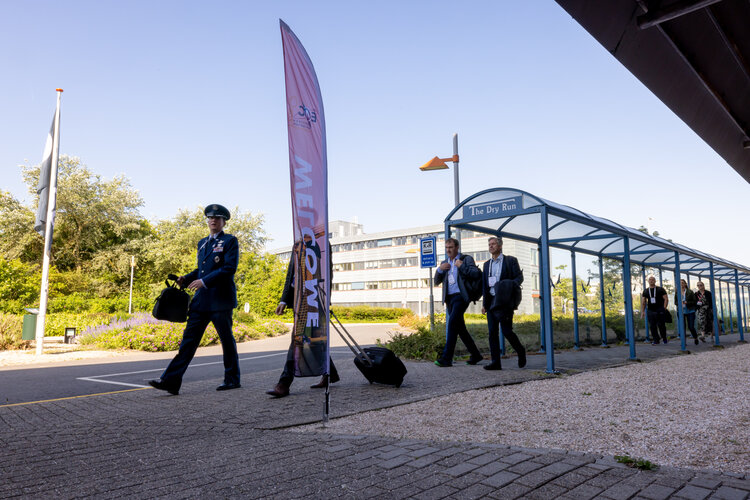
This year’s European Navigation Conference took place from 31 May to 2 June at ESA’s ESTEC technical centre in Noordwijk, home to the Agency’s navigation efforts. The ENC is organised each year under the umbrella the European Group of Institutes of Navigation (EUGIN) and this year by the Netherlands Institute of Navigation (NIN). Top of the list of discussions points? Enhancing the resilience of the positioning, navigation, and timing (PNT) systems all of us have come to depend on.
European Navigation Conference at ESTEC discusses more resilient satnav
8.6.2023 14:35 ESA Navigation
This year’s European Navigation Conference took place from 31 May to 2 June at ESA’s ESTEC technical centre in Noordwijk, home to the Agency’s navigation efforts. The ENC is organised each year under the umbrella the European Group of Institutes of Navigation (EUGIN) and this year by the Netherlands Institute of Navigation (NIN). Top of the list of discussion points? Enhancing the resilience of the positioning, navigation, and timing (PNT) systems all of us have come to depend on.
Monitoring
8.6.2023 14:05 GeotronicsS monitorovacími systémy Trimble můžete průběžně zaznamenávat data o stavu prostředí a detekovat i ty nejmenší změny.
The post Monitoring first appeared on GEOTRONICS Praha.
Monitoring
8.6.2023 14:05 GeotronicsS monitorovacími systémy Trimble můžete průběžně zaznamenávat data o stavu prostředí a detekovat i ty nejmenší změny.
The post Monitoring first appeared on GEOTRONICS Praha.
Sustainably supporting 8 billion people with EU Space
8.6.2023 9:43 European GNSS Agency
Having hit the 8 billion mark late last year, the global population is expected to swell to a whopping 9 billion people by 2037.
As the population grows, so too will its impact on the environment, climate change, resource use and urbanisation. So, how do we sustainably provide for 8 billion people, let alone 9?
According to a new report published by the EU Agency for the Space Programme (EUSPA), in partnership with the United Nations Office for Outer Space Affairs (UNOOSA) the answer can be found in space.
Entitled “Contribution to the Space2030 Agenda – The European Union Space Programme “EU Space” Supporting a world with a population of 8 billion”, the report focuses on how to best leverage EU Space data and information to answer the sustainability challenges of today while also paving the way towards a sustainable – and more densely populated – future.
Space as a driver for sustainable development
Released within the framework of the UN’s Space 2030 Agenda, which provides a roadmap for using space as a driver for sustainable development, the report looks at how Copernicus, Galileo, EGNOS and GOVSATCOM can address such population-related challenges as food security, water management, climate change and the environment.
“Through case studies and concrete examples, this report showcases how the EU Space Programme and its synergies actively contribute to tackling some of the most pressing sustainability challenges,” says EUSPA Executive Director Rodrigo da Costa.
“By raising awareness about different solutions and stressing the importance of space in a world with an increasing population, we’ve provided a very practical overview for decision and policy makers on what space can do vis-à-vis the selected challenges,” adds UNOOSA Acting Director Niklas Hedman.
The report is the latest outcome of a March 2022 Memorandum of Understanding (MoU) that EUSPA and UNOOSA signed to collaborate on using space technology to achieve the shared goals of the 2030 Agenda for Sustainable Development, Paris Agreement on Climate Change and EU Green Deal.
You can read the full report here.
Media note: This feature can be republished without charge provided the European Union Agency for the Space Programme (EUSPA) is acknowledged as the source at the top or the bottom of the story. You must request permission before you use any of the photographs on the site. If you republish, we would be grateful if you could link back to the EUSPA website (http://www.euspa.europa.eu).
Zveřejnění obsahu informací poskytnutých na žádost dle zákona č. 106/1999 Sb. za rok 2023
8.6.2023 9:20 ČÚZK - předpisy a opatření Katastrální úřad pro Středočeský krajzveřejňuje obsah informace poskytnutých na žádost dle zákona č. 106/1999 Sb. za rok 2022
2023
Zveřejnění obsahu informací poskytnutých na žádost dle zákona č. 106/1999 Sb. za rok 2023
8.6.2023 9:20 ČÚZK /Urady/Katastralni-urady/Katastralni-urady/Katastralni-urad-pro-Stredocesky-kraj/Casto-hledane-informace/Poskytovani-informaci-106-1999-Sb/Zverejneni-obsahu-informaci-poskytnutych-na-za-(1)/Zverejneni-obsahu-informaci-poskytnutych-na-za-(5)25 years of Copernicus
8.6.2023 9:00 ESA Observing the Earth Video:
00:05:05
Video:
00:05:05
25 years ago, Copernicus set out to transform the way we see our planet. It is the largest environmental monitoring programme in the world. Learn more about the Copernicus programme and the Sentinel satellite missions developed by ESA.
Mapová aplikace ÚPD - nové dokumentace
8.6.2023 8:40 Jihočeský krajV mapové aplikaci Územně plánovací dokumentace obcí byla aktualizována ÚPD obcí ORP Prachatice – Olšovice, ORP Strakonice – Strakonice, ORP Český Krumlov – Větřní, ORP Jindřichův Hradec – Nová Včelnice, Žďár.
Výstava "Země Františka Josefa: 150 let od objevení" [Knihovna geografie, byTopic]
8.6.2023 0:00 Katedra aplikované geoinformatiky a kartografie Přf UK Geografická sekce, Mapová sbírka a Knihovna geografie Přírodovědecké fakulty Univerzity Karlovy, ve spolupráci s Regionálním muzeem v Teplicích pořádají polární výstavu "Země Františka Josefa: 150 let od objevení". Srdečně vás zveme na slavnostní vernisáž, která se uskuteční v předsálí Mapové sbírky v úterý 13.6.2023 od 13,00 hod.TurboCAD MAC Deluxe 12 CZ v akční ceně
7.6.2023 18:34 ŠPINAR - softwareVážení zákazníci, dovolujeme si Vám nabídnout program TurboCAD MAC Deluxe pro 2D a 3D kreslení v češtině. v akční ceně do 5.2.2022.
The post TurboCAD MAC Deluxe 12 CZ v akční ceně appeared first on ŠPINAR – software.
Na den geoinformatikem
7.6.2023 17:43 Katedra geoinformatiky UP OlomoucZveme všechny zájemce o studium geoinformatiky v Olomouci na speciální akci – Na den geoinformatikem ! 🥸 Zažijte, jaké je to u nás studovat ve tří hodinách 🙂 Účast je pro všechny zdarma, stačí se registrovat https://www.geoinformatics.upol.cz/naden Budeme se na vás těšit 🙂
The post Na den geoinformatikem appeared first on Katedra geoinformatiky.
Na den geoinformatikem
7.6.2023 17:43 Katedra geoinformatiky UP Olomouc Zveme všechny zájemce o studium geoinformatiky v Olomouci na speciální akci – Na den geoinformatikem ! 🥸 Zažijte, jaké je to u nás studovat ve tří hodinách 🙂 Účast je pro všechny zdarma, stačí se registrovat https://www.geoinformatics.upol.cz/naden Budeme se na vás těšit 🙂Na den geoinformatikem
7.6.2023 17:43 Katedra geoinformatiky UP Olomouc Zveme všechny zájemce o studium geoinformatiky v Olomouci na speciální akci – Na den geoinformatikem ! 🥸 Zažijte, jaké je to u nás studovat ve tří hodinách 🙂 Účast je pro všechny zdarma, stačí se registrovat https://www.geoinformatics.upol.cz/naden Budeme se na vás těšit 🙂25 times Copernicus made the headlines
7.6.2023 15:55 ESA Observing the Earth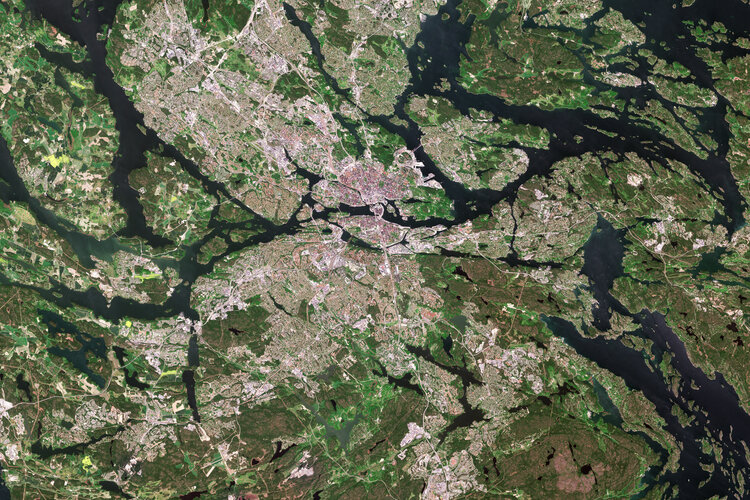
Twenty-five years ago, Copernicus set out to transform the way we see our planet. Now, well established as the largest environmental monitoring programme in the world, it returns a whopping 16 terabytes of high-quality data every single day. To mark a quarter-century of European success in space, we look back at a selection of 25 Copernicus highlights.
20230607_Odborný / vrchní referent oddělení aktualizace PI KN I.
7.6.2023 14:03 ČÚZK /Urady/Katastralni-urady/Katastralni-urady/Katastralni-urad-pro-Stredocesky-kraj/Katastralni-pracoviste/KP-Praha-vychod/O-uradu/Aktuality/20210922_Odborny-referent-oddeleni-aktualizace-(2)20230607_Odborný / vrchní referent oddělení aktualizace PI KN I.
7.6.2023 14:03 ČÚZK - předpisy a opatření Katastrální úřad pro Středočeský kraj - Katastrální pracoviště Praha-východ Vyhlášení výběrového řízení: Odborný / vrchní referent oddělení aktualizace PI KN I. V části "Úřední deska", v sekci "Oznámení a jiná úřední sdělení" bylo vystaveno "Oznámení o vyhlášení výběrového řízení na obsazení služebního místa Odborný / vrchní referent oddělení aktualizace PI KN I."Zveřejnění obsahu informací poskytnutých na žádost dle zákona č. 106/1999 Sb. za rok 2023
7.6.2023 14:03 ČÚZK /Urady/Katastralni-urady/Katastralni-urady/Katastralni-urad-pro-Plzensky-kraj/Casto-hledane-informace/Poskytovani-informaci-106-1999-Sb/Zverejneni-obsahu-informaci-poskytnutych-na-za-(1)/Zverejneni-obsahu-informaci-poskytnutych-na-za-(5)Zveřejnění obsahu informací poskytnutých na žádost dle zákona č. 106/1999 Sb. za rok 2023
7.6.2023 14:03 ČÚZK - předpisy a opatření Katastrální úřad pro Plzeňský krajzveřejňuje obsah informace poskytnutých na žádost dle zákona č. 106/1999 Sb. za rok
2023
Odborný / vrchní referent oddělení aktualizace PI KN I.
7.6.2023 14:02 ČÚZK - volná místa Katastrální úřad pro Středočeský kraj vypisuje výběrové řízení na místo Odborný / vrchní referent oddělení aktualizace PI KN I.Odborný / vrchní referent oddělení aktualizace PI KN I.
7.6.2023 14:02 ČÚZK - předpisy a opatření Katastrální úřad pro Středočeský kraj - Katastrální pracoviště Praha-východvypisuje výběrové řízení na místo
Odborný / vrchní referent oddělení aktualizace PI KN I.
Odborný / vrchní referent oddělení aktualizace PI KN I.
7.6.2023 14:02 ČÚZK - volná místa Katastrální úřad pro Středočeský kraj - Katastrální pracoviště Praha-východ vypisuje výběrové řízení na místo Odborný / vrchní referent oddělení aktualizace PI KN I.Odborný / vrchní referent oddělení aktualizace PI KN I.
7.6.2023 14:02 ČÚZK - předpisy a opatření Katastrální úřad pro Středočeský krajvypisuje výběrové řízení na místo
Odborný / vrchní referent oddělení aktualizace PI KN I.
Výroční zpráva dle zákona č. 106/1999 Sb. za rok 2022
7.6.2023 13:54 ČÚZK - předpisy a opatření Katastrální úřad pro Plzeňský krajvydává výroční zprávu úřadu za rok
2022
Výroční zpráva dle zákona č. 106/1999 Sb. za rok 2022
7.6.2023 13:54 ČÚZK /Urady/Katastralni-urady/Katastralni-urady/Katastralni-urad-pro-Plzensky-kraj/Vyrocni-zpravy/Vyrocni-zprava-dle-zakona-c-106-1999-Sb-za-rok-20220230607_Investiční referent OHS – vrchní referent / rada
7.6.2023 11:00 ČÚZK - předpisy a opatření Katastrální úřad pro Středočeský kraj Vyhlášení výběrového řízení: Investiční referent OHS – vrchní referent / rada V části "Úřední deska", v sekci "Oznámení a jiná úřední sdělení" bylo vystaveno "Oznámení o vyhlášení výběrového řízení na obsazení služebního místa Investiční referent OHS – vrchní referent / rada"20230607_Investiční referent OHS – vrchní referent / rada
7.6.2023 11:00 ČÚZK /Urady/Katastralni-urady/Katastralni-urady/Katastralni-urad-pro-Stredocesky-kraj/O-uradu/Aktuality/20210922_Odborny-referent-oddeleni-aktualizac-(5)20230607_Rada / odborný rada – interní auditor
7.6.2023 9:50 ČÚZK /Urady/Katastralni-urady/Katastralni-urady/Katastralni-urad-pro-Stredocesky-kraj/O-uradu/Aktuality/20210922_Odborny-referent-oddeleni-aktualizac-(4)20230607_Rada / odborný rada – interní auditor
7.6.2023 9:50 ČÚZK - předpisy a opatření Katastrální úřad pro Středočeský kraj Vyhlášení výběrového řízení: Rada / odborný rada – interní auditor V části "Úřední deska", v sekci "Oznámení a jiná úřední sdělení" bylo vystaveno "Oznámení o vyhlášení výběrového řízení na obsazení služebního místa Rada / odborný rada – interní auditor"Výběrové řízení
7.6.2023 9:12 ČÚZK - předpisy a opatření Katastrální úřad pro Plzeňský kraj - Katastrální pracoviště Domažlice zveřejnil novou aktualitu: Ředitelka Katastrálního úřadu pro Plzeňský kraj jako služební orgán příslušný podle § 10 odst. 1 písm. f) zákona č. 234/2014 Sb., o státní službě, ve znění pozdějších předpisů, vyhlašuje výběrové řízení na služební místo vrchní referent/rada – obnova katastrálního operátu OKO0402, na Katastrálním úřadu pro Plzeňský kraj, oddělení aktualizace KN, na Katastrálním pracovišti Domažlice, se služebním působištěm v Domažlicích.Na služebním místě je státní služba (dále jen „služba“) vykonávána v oboru služby 55. Zeměměřictví a katastr nemovitostí.
Služební místo je zařazeno podle přílohy č. 1 k zákonu o státní službě do 10. platové třídy.
Služba na služebním místě bude vykonávána ve služebním poměru na dobu neurčitou.
Předpokládaným dnem nástupu do služby na služebním místě je 1. červenec 2023.
Posuzovány budou žádosti o přijetí do služebního poměru a zařazení na služební místo nebo žádosti o zařazení na služební místo podané ve lhůtě do 14. června 2023.
Vyhlášení výběrového řízení na služební místo vrchní referent/rada – obnova katastrálního operátu OK
7.6.2023 9:06 ČÚZK - volná místa Katastrální úřad pro Plzeňský kraj Katastrální pracoviště Domažlice vypisuje výběrové řízení na místo Vyhlášení výběrového řízení na služební místo vrchní referent/rada – obnova katastrálního operátu OKVyhlášení výběrového řízení na služební místo vrchní referent/rada – obnova katastrálního operátu OK
7.6.2023 9:06 ČÚZK /Urady/Katastralni-urady/Katastralni-urady/Katastralni-urad-pro-Plzensky-kraj/Uredni-deska/Oznameni-a-jina-uredni-sdeleni/Volna-mista/DMS/Vyhlaseni-vyberoveho-rizeni-na-sluzebni-misto-vrchVyhlášení výběrového řízení na služební místo vrchní referent/rada – obnova katastrálního operátu OK
7.6.2023 9:06 ČÚZK - předpisy a opatření Katastrální úřad pro Plzeňský kraj Katastrální pracoviště Domažlicevypisuje výběrové řízení na místo
Vyhlášení výběrového řízení na služební místo vrchní referent/rada – obnova katastrálního operátu OKO0402
účetní (finanční referent) ekonomického oddělení
7.6.2023 8:40 ČÚZK - volná místa Katastrální úřad pro Liberecký kraj kancelář ředitele vypisuje výběrové řízení na místo účetní (finanční referent) ekonomického odděleníúčetní (finanční referent) ekonomického oddělení
7.6.2023 8:40 ČÚZK /Urady/Katastralni-urady/Katastralni-urady/Katastralni-urad-pro-Liberecky-kraj/Volna-mista/DMS/ucetni-(financni-referent)-ekonomickeho-oddeleniúčetní (finanční referent) ekonomického oddělení
7.6.2023 8:40 ČÚZK - předpisy a opatření Katastrální úřad pro Liberecký kraj kancelář ředitelevypisuje výběrové řízení na místo
účetní (finanční referent) ekonomického oddělení
Odstávka el. energie
7.6.2023 8:33 ČÚZK - předpisy a opatření Katastrální úřad pro Středočeský kraj - Katastrální pracoviště Kladno zveřejnil novou aktualitu: Upozorňujeme, že v úterý 13. 6. 2023 bude přerušena dodávka elektřiny do budovy Ctiborova 3091, v době cca od 8:00 - 11:30.Z důvodu vstřícnosti vůči veřejnosti KÚ pro Středočeský kraj, Katastrální pracoviště Kladno zajistí přijímání podání podatelnou, která bude jednotlivá podání označovat razítkem a ručně vypsaným časem podání (nebude možné vygenerovat číslo jednací a podklad pro platbu) do doby ukončení odstávky a obnovení plné funkčnosti serveru a ISKN.
Upozornění
7.6.2023 7:48 ČÚZK /Urady/Zememericke-a-katastralni-inspektoraty/Zememericke-a-katastralni-inspektoraty/Zememericky-a-katastralni-inspektorat-v-Praze/O-uradu/Aktuality/UpozorneniUpozornění
7.6.2023 7:48 ČÚZK - předpisy a opatření Zeměměřický a katastrální inspektorát v Praze zveřejnil novou aktualitu: Upozorňujeme, že od 8.6. do 20.7.2023 bude z důvodu výkopových prací omezeno parkování v okolí budovy zeměměřických a katastrálních úřadů v Praze. K dopravě na úřady doporučujeme využít MHD (stanice metra C - Kobylisy)Odstávka INT1 9.6.2023
6.6.2023 22:56 ČÚZK - předpisy a opatření Český úřad zeměměřický a katastrální upozorňuje na plánovanou odstávku integrační prostředí INT1 IS DMVS dne 9. června 2023, důvodem je nasazení nové verze 1.5.0 informačního systému. O ukončení odstávky vás budeme informovat. Omlouváme se za případné komplikace.Stavební zákon byl novelizován, do roku 2027 lze v některých případech předkládat dokumentaci zpracovanou podle dosavadních předpisů
6.6.2023 21:34 BIM NewsČeská komora autorizovaných inženýrů a techniků činných ve výstavbě (ČKAIT) informovala o novele stavebního zákona. Novela posouvá nabytí účinnosti Nového stavebního a Změnového zákona a tím i změny Autorizačního zákona, vycházející z části sedmé novelizovaného Změnového zákona dle jeho části třicáté bodu 15, namísto července 2023 až k 1. lednu 2024. Novelizující zákon byl podepsán […]
The post Stavební zákon byl novelizován, do roku 2027 lze v některých případech předkládat dokumentaci zpracovanou podle dosavadních předpisů appeared first on BIM News.
Stavební zákon byl novelizován, do roku 2027 lze v některých případech předkládat dokumentaci zpracovanou podle dosavadních předpisů
6.6.2023 21:34 BIM News Česká komora autorizovaných inženýrů a techniků činných ve výstavbě (ČKAIT) informovala o novele stavebního zákona. Novela posouvá nabytí účinnosti Nového stavebního a Změnového zákona a tím i změny Autorizačního zákona, vycházející z části sedmé novelizovaného Změnového zákona dle jeho části třicáté bodu 15, namísto července 2023 až k 1. lednu 2024. Novelizující zákon byl podepsán […]Pořádali jsme poptávaný workshop na téma antidrony pro NÚKIB
6.6.2023 16:00 UAVAAliance pro bezpilotní letecký průmysl pořádala pro NÚKIB workshop na téma antidrony a způsoby detekce a obrany proti dronům za aktivní účasti členů Aliance UpVision a RETIA, a.s.. #drony #detekce
The post Pořádali jsme poptávaný workshop na téma antidrony pro NÚKIB appeared first on UAV Aliance pro bezpilotní letecký průmysl.
Opět skvělé umístění českých geografů/kartografů/GISáků v Best Map Award časopisu Journal of Maps za rok 2022
6.6.2023 12:30 GISportal.cz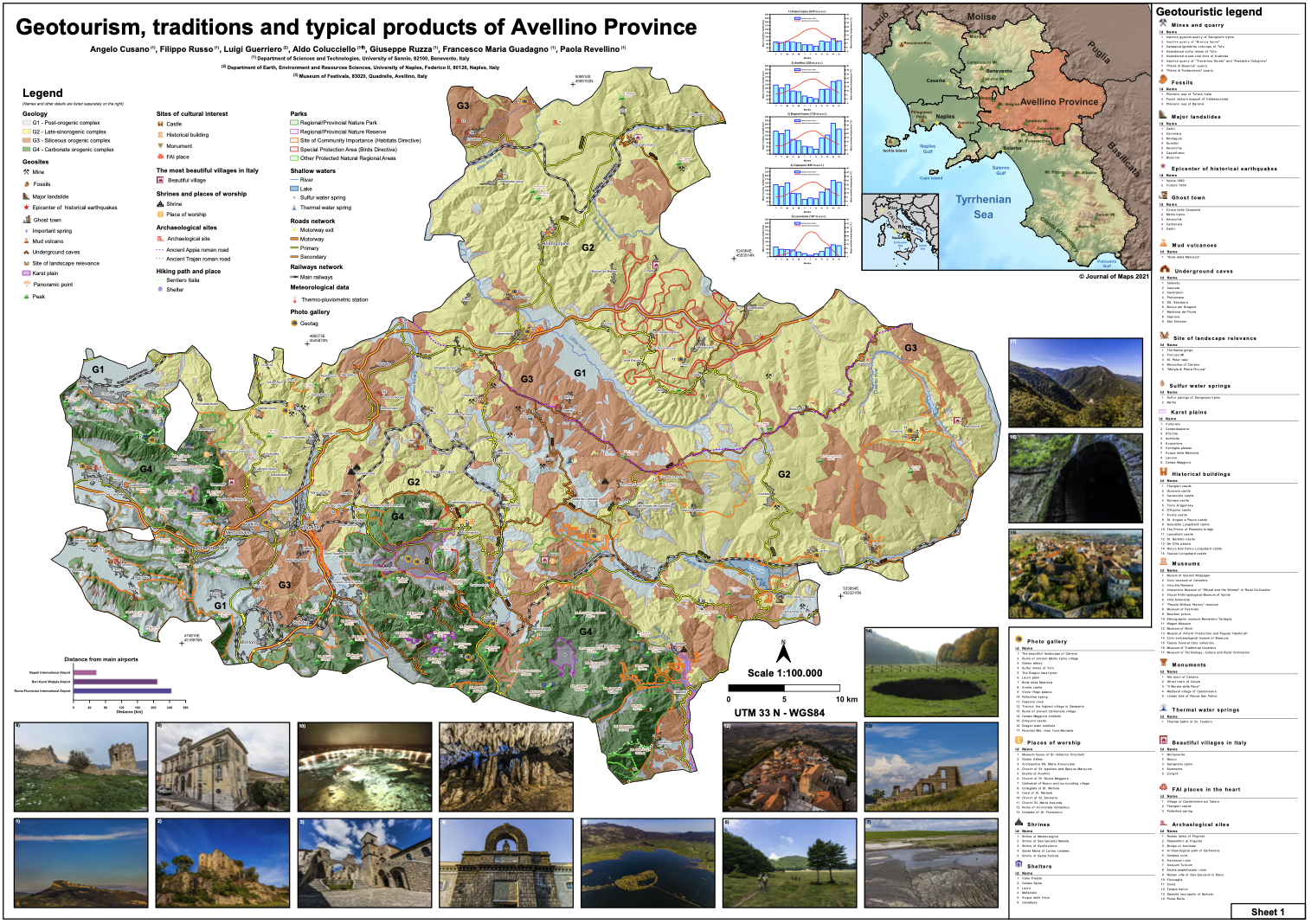
Dvě české mapy letos získaly prestižní ocenění v soutěži Best Map Award časopisu Journal of Maps za rok 2022. Tato uznání jsou výsledkem tvrdé práce a inovativního přístupu k vizualizaci dat. První je oceněný článek s názvem „Visualising residents’ fear of crime with recorded crime data from four Czech cities“ autorského kolektivu Petra Linhartová, Igor […]
The post Opět skvělé umístění českých geografů/kartografů/GISáků v Best Map Award časopisu Journal of Maps za rok 2022 appeared first on GISportal.cz.
Opět skvělé umístění českých geografů/kartografů/GISáků v Best Map Award časopisu Journal of Maps za rok 2022
6.6.2023 12:30 GISportal.cz
Dvě české mapy letos získaly prestižní ocenění v soutěži Best Map Award časopisu Journal of Maps za rok 2022. Tato uznání jsou výsledkem tvrdé práce a inovativního přístupu k vizualizaci dat. První je oceněný článek s názvem „Visualising residents’ fear of crime with recorded crime data from four Czech cities“ autorského kolektivu Petra Linhartová, Igor […]
The post Opět skvělé umístění českých geografů/kartografů/GISáků v Best Map Award časopisu Journal of Maps za rok 2022 appeared first on GISportal.cz.
výběrové řízení na KÚ pro Vysočinu
6.6.2023 10:31 ČÚZK - předpisy a opatření Katastrální úřad pro Vysočinu zveřejnil novou aktualitu: Oznámení o vyhlášení výběrového řízení na služební místo odborný referent/vrchní referent v personálním oddělení Kanceláře ředitele katastrálního úřadu na Katastrálním úřadu pro Vysočinu.odborný-vrchní referent -personální oddělení
6.6.2023 10:10 ČÚZK - předpisy a opatření Katastrální úřad pro Vysočinu kancelář ředitelevypisuje výběrové řízení na místo
odborný-vrchní referent -personální oddělení
odborný-vrchní referent -personální oddělení
6.6.2023 10:10 ČÚZK - volná místa Katastrální úřad pro Vysočinu kancelář ředitele vypisuje výběrové řízení na místo odborný-vrchní referent -personální odděleníodborný-vrchní referent -personální oddělení
6.6.2023 10:10 ČÚZK /Urady/Katastralni-urady/Katastralni-urady/Katastralni-urad-pro-Vysocinu/Uredni-deska/Oznameni-a-jina-uredni-sdeleni/Volna-mista/DMS/odborny-vrchni-referent-personalni-oddeleniKonference BLK Day Střítež 15.6.2023 - skenovací technika
6.6.2023 10:02 GEFOS Zaměříme se na statické, mobilní i létající BLK skenery a navazující software pro zpracování dat. Budete si moci vyzkoušet skener, který Vás nejvíce zaujme, a rádi s Vámi probereme Vaše dotazy a připomínky. Program začne ve čtvrtek 15.6. v 11:00 a skončí kolem 15:30. Přihlaste se zde!Hledá se! Obchodní manažer se zaměřením na technickou podporu
6.6.2023 10:00 GEFOS Chcete pracovat s nejnovější technikou LEICA?Zajímá Vás, jak celá technologie funguje a chcete své znalosti předávat dál?
Máte obchodního ducha a rád(a) komunikujete se zákazníky?
Kontaktujte nás!
Roadshow v2024 - Záznamy vysílání
6.6.2023 8:00 Adeon
Jako každý rok, tak i letos jsme pro vás připravili tradiční roadshow nových strojírenských technologii Autodesk.
The post Roadshow v2024 - Záznamy vysílání appeared first on Adeon CZ.
Roadshow v2024 - Záznamy vysílání
6.6.2023 8:00 Adeon
Jako každý rok, tak i letos jsme pro vás připravili tradiční roadshow nových strojírenských technologii Autodesk.
The post Roadshow v2024 - Záznamy vysílání appeared first on Adeon CZ.
Roadshow v2024 - Záznamy vysílání
6.6.2023 8:00 Adeon
Jako každý rok, tak i letos jsme pro vás připravili tradiční roadshow nových strojírenských technologii Autodesk.
The post Roadshow v2024 - Záznamy vysílání appeared first on Adeon CZ.
Pozvánka na vernisáž nové výstavy [Knihovna geografie, byTopic]
6.6.2023 0:00 Katedra aplikované geoinformatiky a kartografie Přf UK Srdečně zveme všechny zájemce na vernisáž výstavy "Země Františka Josefa: 150 let od objevení", která se uskuteční v předsálí Mapová sbírky v úterý 13.6.2023 od 13,00 hod.Pozvánka na vernisáž nové výstavy [Knihovna geografie, byTopic]
6.6.2023 0:00 Katedra aplikované geoinformatiky a kartografie Přf UK Srdečně zveme všechny zájemce na vernisáž výstavy "Země Františka Josefa: 150 let od objevení", která se uskuteční v předsálí Mapové sbírky v úterý 13.6.2023 od 13,00 hod.WORKSHOP – 3D skenování a digitální mapa
5.6.2023 19:24 3gon Zveme Vás ve spolupráci s GISOFT na workshop, který je věnovaný 3D skenování a digitální mapě. Programem akce je představeníTwiGIS pracuje s 3D objekty, vytvořenými v BIM softwaru
5.6.2023 17:15 GeoBusinessJakub Bican ze společnosti Arkance Systems představil nové funkcionality jejich softwaru twiGIS. Představení proběhlo na konferenci Autodesk Live 2024, na které firma představuje nové funkce v softwarech Autodesku a také ve svých produktech.
The post TwiGIS pracuje s 3D objekty, vytvořenými v BIM softwaru appeared first on GeoBusiness.
TwiGIS pracuje s 3D objekty, vytvořenými v BIM softwaru
5.6.2023 17:15 GeoBusinessThe post TwiGIS pracuje s 3D objekty, vytvořenými v BIM softwaru appeared first on GeoBusiness.
Rada/odborný rada – oddělení katastrálního operátu 1
5.6.2023 16:47 ČÚZK - volná místa Katastrální úřad pro Karlovarský kraj vypisuje výběrové řízení na místo Rada/odborný rada – oddělení katastrálního operátu 1Rada/odborný rada – oddělení katastrálního operátu 1
5.6.2023 16:47 ČÚZK - předpisy a opatření Katastrální úřad pro Karlovarský krajvypisuje výběrové řízení na místo
Rada/odborný rada – oddělení katastrálního operátu 1




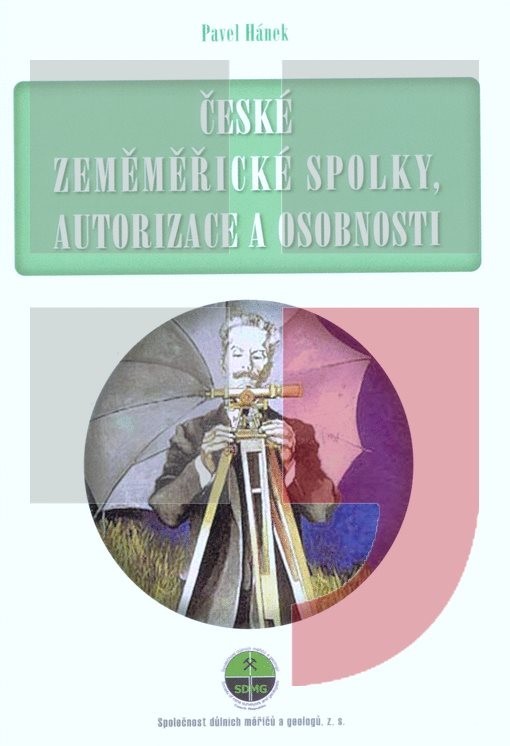
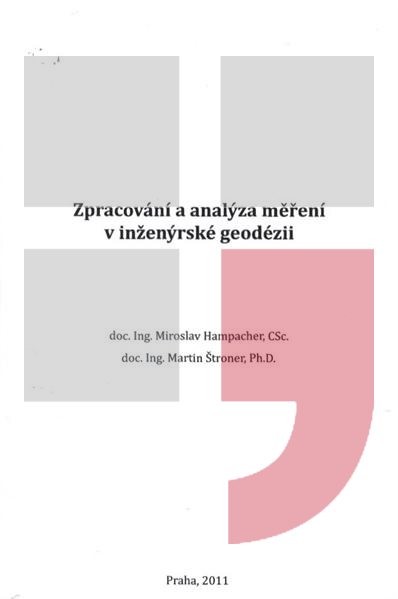
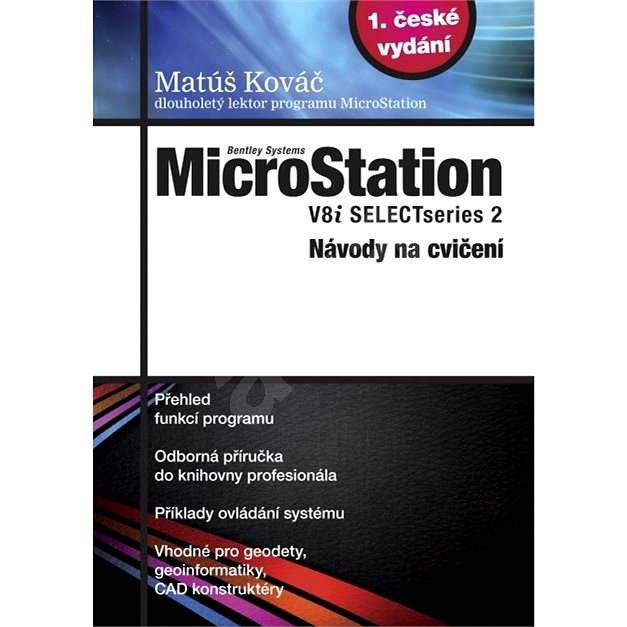
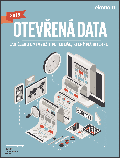
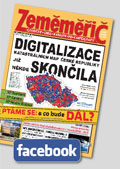
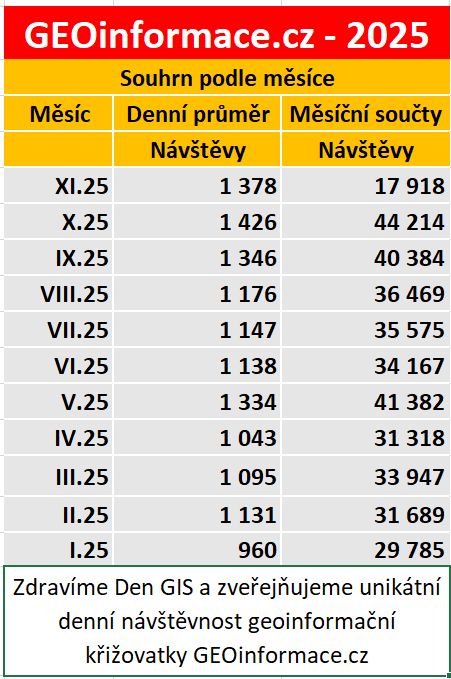
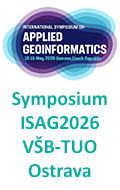
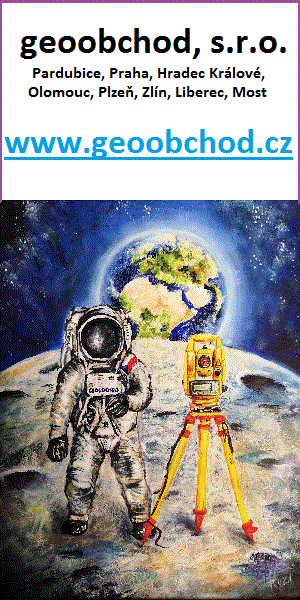

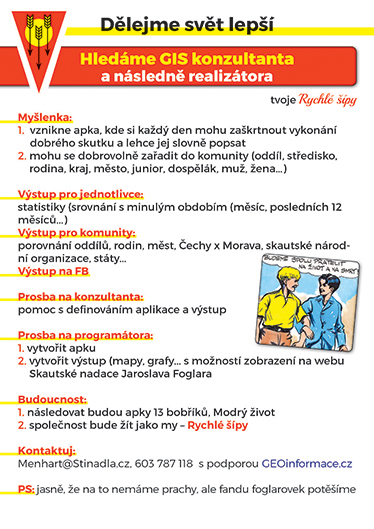


 Image:
Satnav from Earth to the Moon
Image:
Satnav from Earth to the Moon